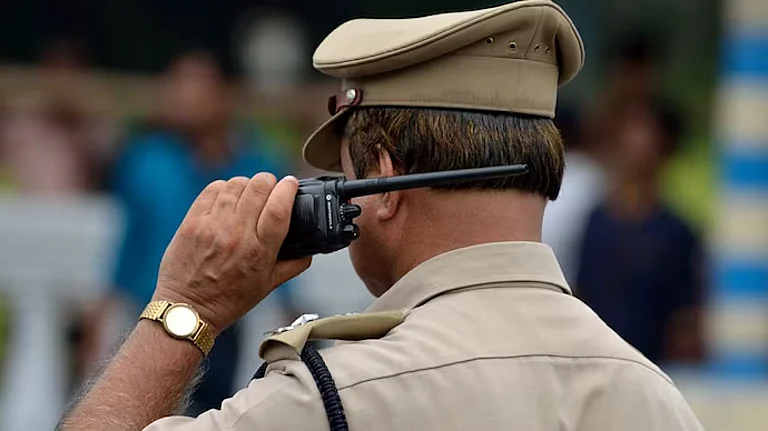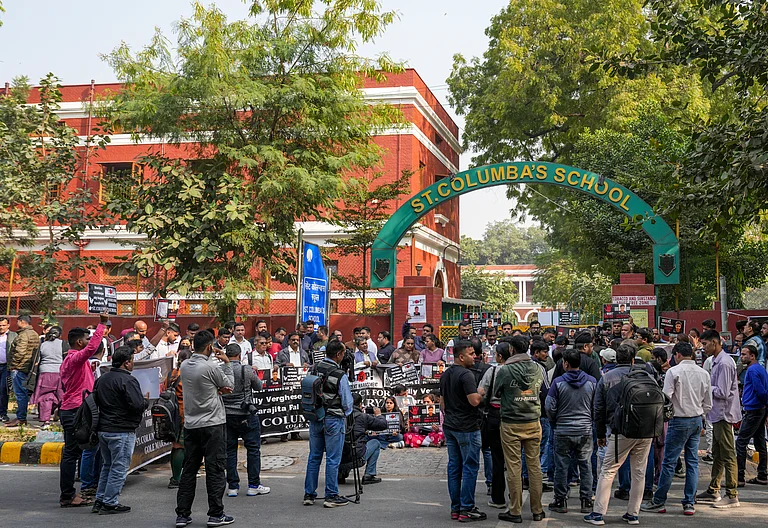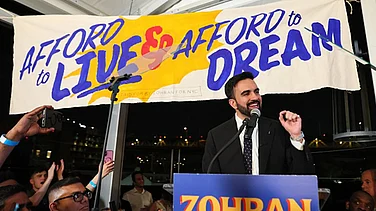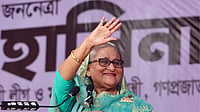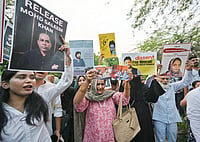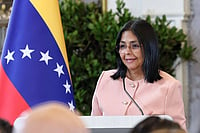The situation is tense at United States’ Columbia University where riot police have surrounded the encampment of pro-Palestinian student protestors after they refused to move out of campus. The university has become a focal point for solidarity protests, prompting the administration to move classes online for the rest of the Spring semester.
This is not the first time a students' protest at an educational institution has made headlines and given rise to a bigger and broader social movement. Outlook looks at some of the most significant movements led by students in history.
Vietnam War - The 1970 Student Strike, US
The student strike began in May 1970 after President Nixon announced the invasion of Cambodia. The protests intensified when the Ohio National Guard killed four students at Kent State University on May 4, 1970. Students outraged by the Vietnam War and the tragic shootings at Kent State hit the streets in huge numbers.
About 4 million students nationwide are believed to have participated in the strike which picked steam in the following days, leading to closure of hundreds of colleges, universities, and high schools. They demanded an end to the Vietnam War and disrupted day-to-day operations to draw attention to their cause, preventing "business as usual" on campuses.
The strike continued through the end of the academic year at many colleges and universities, which typically concluded in late May or early June. Overall, the 1970 student strike was one of the most significant periods of student activism.
JP Movement India
The Bihar movement, also known as the JP movement, began as a students strike in Bihar in 1974 to protest the state government's alleged rising corruption. It was led by Jayaprakash Narayan, or JP, who opposed Prime Minister Indira Gandhi's authoritarian rule and called for "Sampoorna Kranti," or Total Revolution.
The movement began in Bihar but spread across India, gaining support from people unhappy with economic issues and corruption. The movement, although became extremely popular involving lakhs of protestors, ended when Indira Gandhi declared a state of Emergency in June 1975, following a gherao of the Indian parliament to demand the resignation of Prime Minister Indira Gandhi.
Tiananmen Square incident - China
Starting as a student-led movement, the Tiananmen Square incident in 1989 refers to a series of protests and demonstrations in China which took a violent turn and resulted in the death of hundreds of protestors. It began with a gathering to mourn the death of the liberal Communist Party leader Hu Yaobang and protest the slow pace of reform. The protests grew into calls for political and economic change, spreading across the country. On the night of June 3-4, the Chinese government declared martial law and cracked down on the demonstrators killing hundreds.
Iranian students' protests of 1999
The Iranian student protests of July 1999 marked a significant point in Iran's opposition movement. The protests began peacefully in response to the closure of the reformist newspaper, Salam. However, they turned violent when a student dormitory was raided by riot police, resulting in one student's death. The protests lasted for six days and spread throughout the country, with at least three more deaths and hundreds injured. In the aftermath, many students were arrested or disappeared without a trace.
May 1968 France students' protests
The May 1968 student protests began in a suburb of Paris and quickly grew into a general strike involving around 10 million workers across the nation. The protests started by French students demanding democratic and educational reforms, cultural liberation, social justice, and better working conditions, were characterised by widespread rioting in Paris and a standstill across France.
The student protests and strikes in France were met with strong opposition from university officials and police. The government's attempts to stop the strikes with police force made the situation worse, leading to violent clashes with police in Paris.









